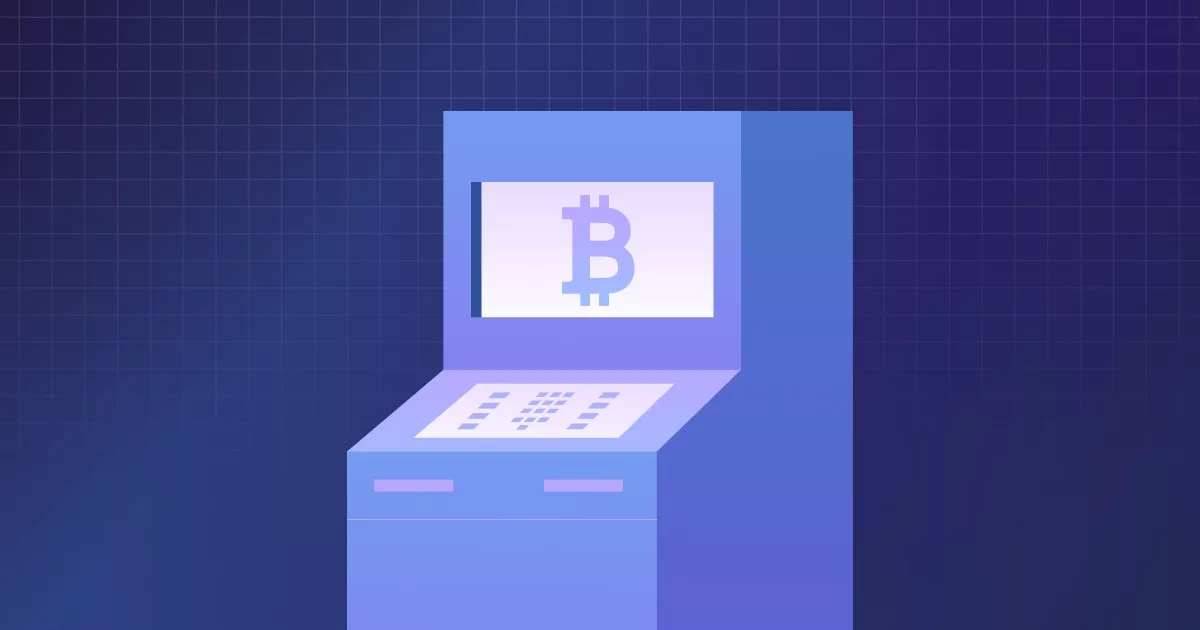
Bitcoin ATMs have become increasingly popular as a convenient and accessible way to buy and sell Bitcoin. These machines provide individuals with the ability to convert cash into Bitcoin and vice versa, bridging the gap between the physical and digital worlds of cryptocurrency.
In this article, we will explore everything you need to know about Bitcoin ATMs.
Whether you are a beginner looking to enter the world of Bitcoin or an experienced user seeking a convenient way to transact with cryptocurrency, this guide will equip you with the knowledge to navigate the world of Bitcoin ATMs effectively.
What are Bitcoin ATMs?
Bitcoin ATMs, also known as BTMs or Bitcoin vending machines, are physical kiosks that allow users to buy or sell Bitcoin and, in some cases, other cryptocurrencies using cash or debit/credit cards.
These machines function similarly to traditional ATMs, but instead of dispensing cash, they facilitate transactions involving Bitcoin.
To use a Bitcoin ATM, users typically follow a simple process.
1. Buying BTC
Step 1: If buying, they provide their Bitcoin wallet address by scanning a QR code or entering it manually.
Step 2: Next, they deposit the required amount of cash or use their debit/credit card to complete the purchase.
Step 3: The Bitcoin is then sent to the provided wallet address.
2. Selling BTC
For selling Bitcoin, users follow a similar process, but instead of depositing cash, they send the Bitcoin from their wallet to the designated address displayed on the machine, and they receive cash in exchange.
These can be found in various locations such as shopping malls, convenience stores, airports, and coffee shops, providing easy access to cryptocurrencies for both newcomers and experienced users.
They play a crucial role in bridging the gap between the digital world of cryptocurrencies and the physical world of traditional finance.
Note: Bitcoin ATMs may charge transaction fees and may have limits on the amount of Bitcoin that can be bought or sold. Also, regulations and requirements for using BTMs may vary across different jurisdictions.
How do Bitcoin ATMs Work?
Bitcoin ATMs (BTMs) work by providing a user-friendly interface that enables individuals to buy or sell Bitcoin using cash or debit/credit cards.
The process of using a BTM typically involves the following steps,
1. Verification
Depending on the BTM operator and regulatory requirements, users may need to complete a one-time verification process. This may involve providing a phone number, scanning identification documents, or undergoing biometric authentication.
2. Selecting the Transaction
Once verified, users choose whether they want to buy or sell Bitcoin on the BTM’s interface.
3. Wallet Address
For buying Bitcoin, users provide their crypto wallet address. This can be done by scanning a QR code from their mobile wallet or entering the address manually.
4. Payment
If purchasing BTC, users can insert cash into the machine or use their debit/credit card to make the payment. Some BTMs also accept contactless payments or mobile wallets.
5. Confirmation
After the payment is made, the BTM verifies the transaction and confirms the purchase or sale. This involves checking the user’s wallet address, the amount being bought or sold, and the current exchange rate.
6. Transaction Completion
Once the transaction is confirmed, the Bitcoin is sent to the provided wallet address, or if selling, the BTM dispenses the cash equivalent.
7. Receipt
BTMs usually provide a printed receipt with transaction details, including the amount, exchange rate, fees, and the public key of the transaction.
Bitcoin ATMs are connected to the internet and communicate with cryptocurrency exchanges or other platforms to determine the exchange rate and complete the transaction in real-time. They also have built-in security features to safeguard user data and prevent unauthorized access. Also, some BTMs allow users to create a new wallet or access an existing wallet directly from the machine.
Note: The exact process may vary slightly between different BTM models and operators, but the core functionality remains the same — facilitating the buying and selling of Bitcoin through a user-friendly interface.
Benefits and Considerations of BTMs
Bitcoin ATMs are like magical gateways to the world of digital currencies, offering a plethora of benefits while requiring a few considerations.
Benefits of Bitcoin ATMs
1. Accessibility
Bitcoin ATMs provide a convenient and accessible way to acquire or sell Bitcoin. They are often located in public places, allowing users to easily access cryptocurrencies without the need for extensive technical knowledge or online exchanges.
2. Privacy
Bitcoin ATMs can offer a certain level of privacy.
Depending on the machine and the transaction amount, users may not need to provide personal identification. This can be advantageous for individuals who prefer to keep their cryptocurrency transactions more discreet.
3. Speed
BTMs enable near-instantaneous transactions.
Once the payment is made, the Bitcoin is usually sent to the provided wallet address within minutes, allowing users to quickly access or liquidate their funds.
Considerations
1. Transaction Fees
Bitcoin ATMs often charge fees for their services, which can vary significantly depending on the BTM operator and location.
Users should consider these fees when determining the cost-effectiveness of using a Bitcoin ATM compared to other methods of acquiring or selling Bitcoin.
2. Exchange Rates
Bitcoin ATMs typically determine exchange rates based on market conditions and may include a markup. It’s essential to compare rates with other platforms to ensure a fair exchange.
3. Limited Availability
Although the number of Bitcoin ATMs is increasing, they may not be as widely available as traditional ATMs or online exchanges.
Depending on your location, finding a nearby Bitcoin ATM may require some research.
Bitcoin ATM Fee Structure
Bitcoin ATM fees can vary depending on several factors, including the location, BTM operator, transaction type, and the amount of Bitcoin being bought or sold.
Here are some key points to understand about Bitcoin ATM fees,
1. Transaction Fees
Bitcoin ATMs typically charge a transaction fee for each buy or sell transaction. This fee is usually a percentage of the transaction amount and can range from 1% to 10% or more.
The fee covers the operational costs of the BTM and the services provided.
2. Markup on Exchange Rates
In addition to transaction fees, Bitcoin ATMs may include a markup on the exchange rate.
The markup is the difference between the current market rate and the rate offered by the BTM. This markup helps cover the costs and risks associated with operating the BTM and providing liquidity.
3. Network Fees
Bitcoin transactions require network fees, known as miner fees, to incentivize miners to process and confirm transactions on the blockchain.
Bitcoin ATMs usually include these fees in their transaction fees, but the specific approach can vary.
4. Additional Fees
In some cases, Bitcoin ATMs may charge additional fees for specific services or optional features. These can include fees for printing receipts, creating new wallets, or using certain payment methods like credit cards.
Conclusion
Bitcoin ATMs have revolutionized the accessibility and convenience of buying and selling Bitcoin. With their ability to convert cash into digital currency and vice versa, these machines have become a significant player in the crypto ecosystem.
Bitcoin ATMs have opened up new avenues for individuals to participate in the world of cryptocurrencies, providing an easy entry point and bridging the gap between traditional and digital finance.
As the adoption of cryptocurrencies continues to grow, Bitcoin ATMs are likely to play an even more prominent role in the future.
FAQs
1. What is a Bitcoin ATM, and how does it differ from traditional ATMs?
A Bitcoin ATM is a machine that allows users to buy or sell Bitcoin using cash or a debit card.
Unlike traditional ATMs, which dispense physical currency, Bitcoin ATMs facilitate transactions involving digital currencies. They bridge the gap between the physical and digital worlds of finance, providing a convenient way to access and interact with cryptocurrencies.
2. How can I buy Bitcoin using a Bitcoin ATMs?
To buy Bitcoin using a Bitcoin ATM, you typically select the “Buy Bitcoin” option on the machine’s interface, choose the amount you wish to purchase, and provide a valid Bitcoin wallet address.
You then insert cash into the ATM, and the equivalent amount of Bitcoin is transferred to your wallet. Some machines may require identity verification for larger purchases.
3. What are the fees associated with Bitcoin ATM transactions?
Bitcoin ATM transactions typically incur fees, which can vary depending on the specific machine and operator. These fees usually include a percentage-based transaction fee, which ranges from 5 to 15 percent of the total transaction amount.
Additionally, some Bitcoin ATMs may charge a variable miner fee to compensate miners for processing transactions. It’s essential to research and compares fees to find the most cost-effective Bitcoin ATM for your transactions.





